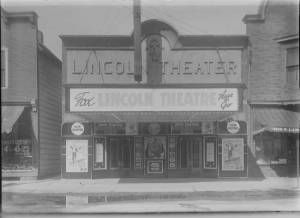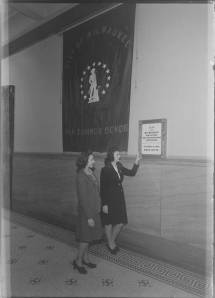While digitization produces a virtual product, the work itself is very much rooted in physical objects – fragile glass plate negatives, oversize and brittle newspaper, art books with multiple perspectives for viewing and reading, old nitrate negatives that don’t lie completely flat…the list goes on. Making a digital object from the physical object is sometimes straightforward – a photographic print is laid on a flatbed scanner and voilá, a high-resolution, archival TIFF is born. But it is often problematic – a negative might have subtle warping that manifests as shadows and distortion in a scanned image, or a multi-media art book simply can’t be properly represented in a series of flat images. And that’s when things get interesting in the digitization unit – traditional digitization tools like flat bed scanners and tripods start to take on modifications using less traditional tools, like painter’s tape, pulleys, and loose change, in order to accommodate those troublesome physical objects.
NEH-funded imaging specialist and modification-maker-extraordinaire, Trevor Berman, has recently “modded” flatbed scanners with hinged anti-Newton-ring glass to achieve the best possible scans of nitrate and safety negatives, and sped up the workflow in the process.
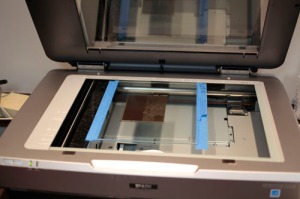 |
| Flatbed with Closed Anti-Newton-Ring Glass and Blue Tape Hinge |
Trevor initially used cereal box tops to create “holders” to uniformly orient and flatten negatives on the flat bed scanners. Then he modified the holders to create a blue-tape hinge for anti-Newton-ring glass to better flatten the negatives without creating Newton rings (tiny but detectable imperfections caused by chemicals on the negative pooling against the glass surface).
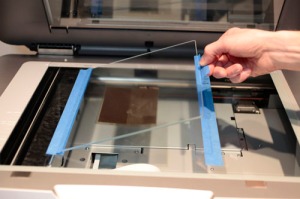 |
| Hinge Held Open - note the additional blue tape "cushion" on the right |
Trevor’s work greatly improved workflows for the NEH-funded American Geographical Society Library project to preserve and share their nitrate negative collections.
Digitization librarian, Ling Meng, was inspired by pulley-based laundry lines in Taiwan to create a pulley system to photograph a collection of Chinese scrolls. The scrolls are too large to capture on a flat bed scanner, or to capture a high-resolution image in a single digital camera shot. But to accurately capture the scroll in two or three shots, and then “stitch” the images together in image editing software, the digital images must be lined up almost perfectly. The pulley system enabled Ling to hang the scrolls for photographing, and move the scroll safely and accurately within the camera frame to capture the entire scroll in two to three shots. The fruits of his labor can be seen in the Chinese scrolls online collection.
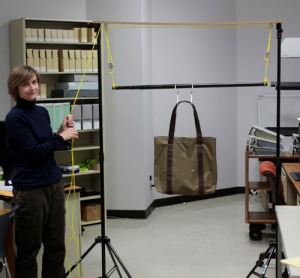 |
| The Pulley System with a bag where the scroll would have hung |
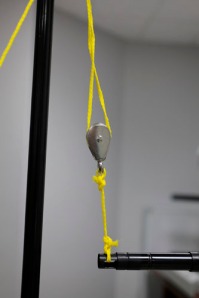 |
| A Close-Up of the Pulley System |
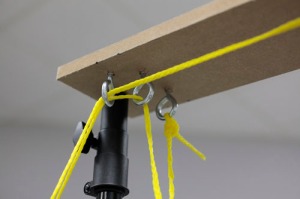 |
| A close-up of the top of the pulley system, where Ling rigged a board atop two tripods |
We’ll post more modifications to the blog, soon!
